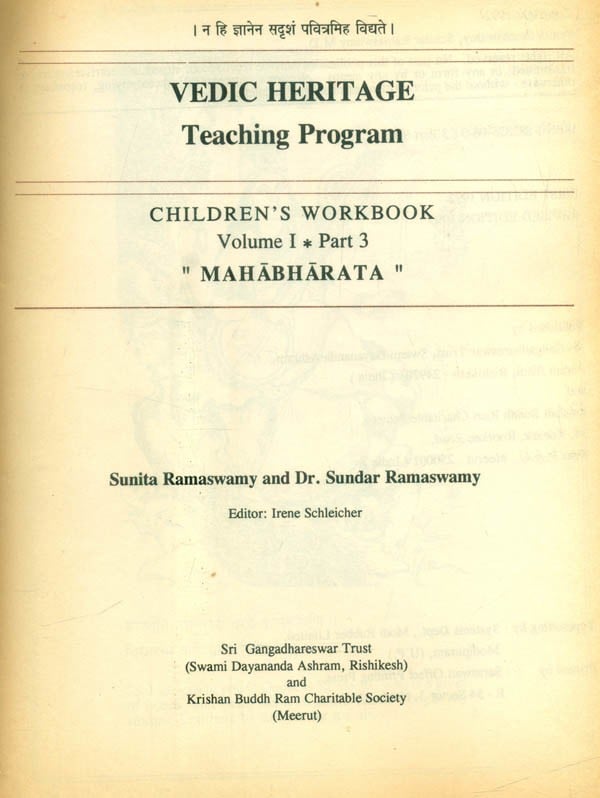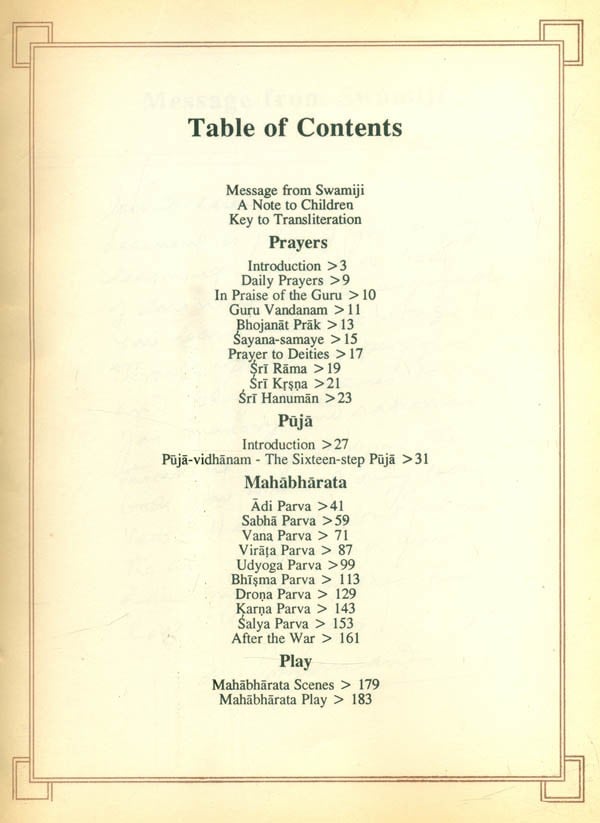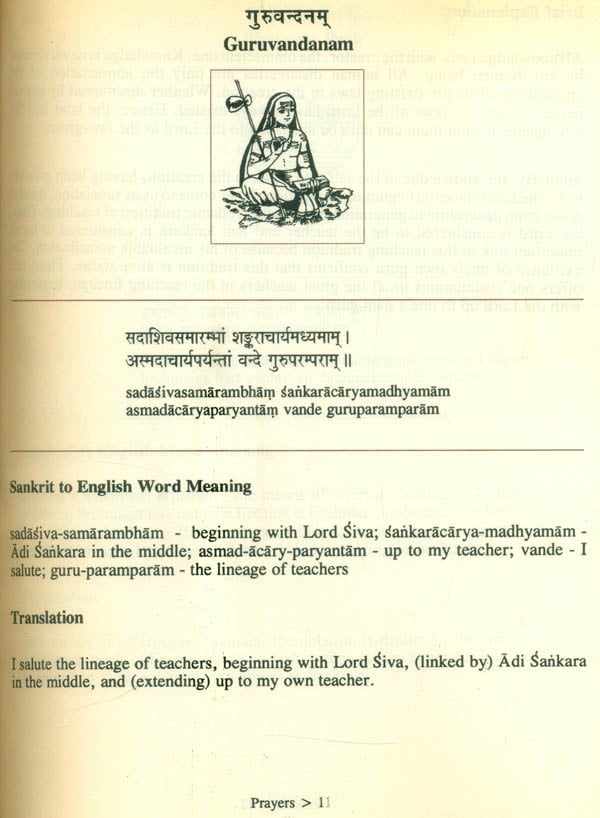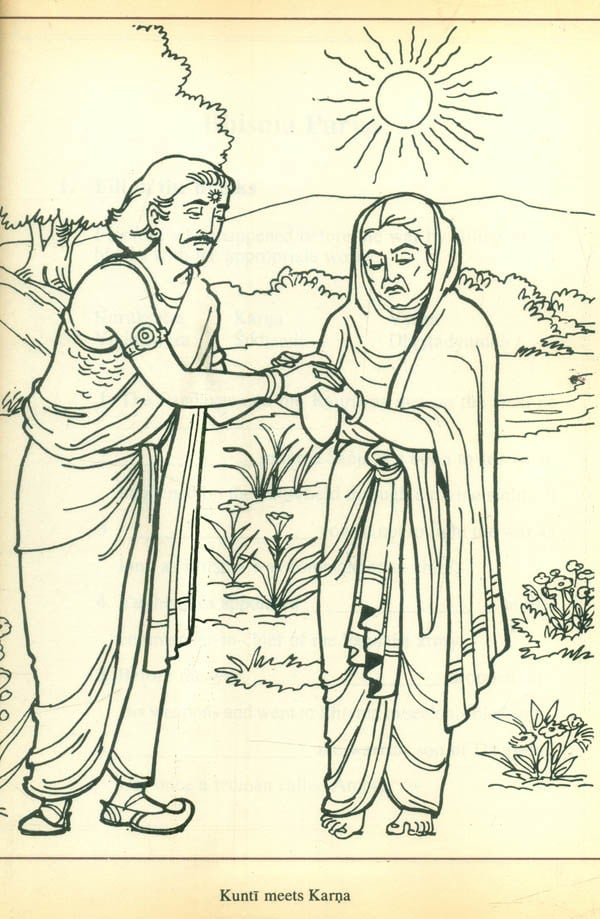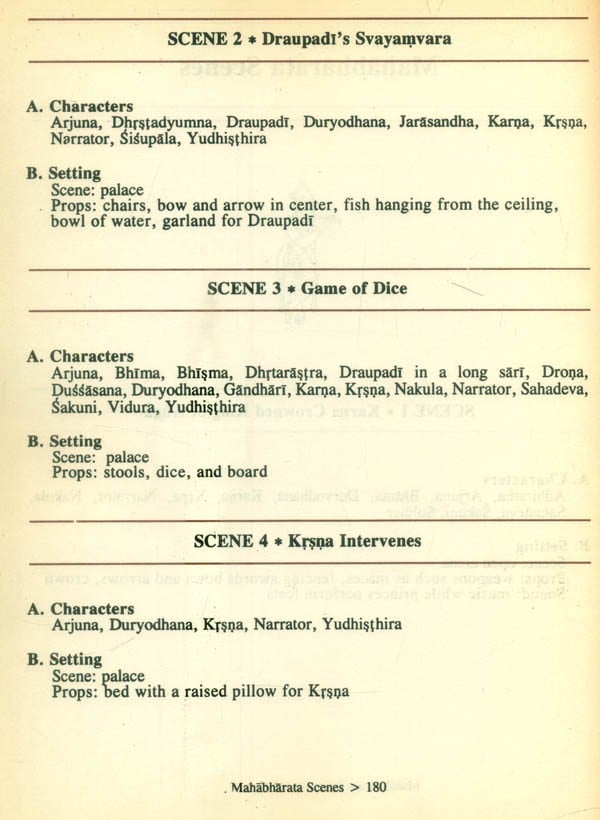
Vedic Heritage Teaching Program Children's Workbook- Mahabharata: Volume-I: Part-3 (An Old and Rare Book)
Book Specification
| Item Code: | UBD231 |
| Author: | Sunita Ramaswamy and Sundar Ramaswamy |
| Publisher: | Sri Gangadhareswar Trust |
| Language: | English |
| Edition: | 1995 |
| Pages: | 206 (Throughout B/w Illustrations) |
| Cover: | PAPERBACK |
| Other Details | 11.00 X 9.00 inch |
| Weight | 600 gm |
Book Description
Prayer has its purpose in helping one achieve an object of desire, be it mental clarity or a given end. Ultimately, prayer helps one gain the maturity to be a qualified recipient of spiritual knowledge. This knowledge teaches us our identity with the Lord and helps us discover freedom and happiness, the nature of oneself.
Three Types of Prayer
Prayer is expressed in three ways: physical, kayika; oral, vacika; and mental, mimamsa.
A ritual or a pooja is a physical form of prayer. Singing in praise of the Lord or chanting verses and Vedic hymns is oral prayer. Japa or worship done silently is mental prayer.
**Contents and Sample Pages**
